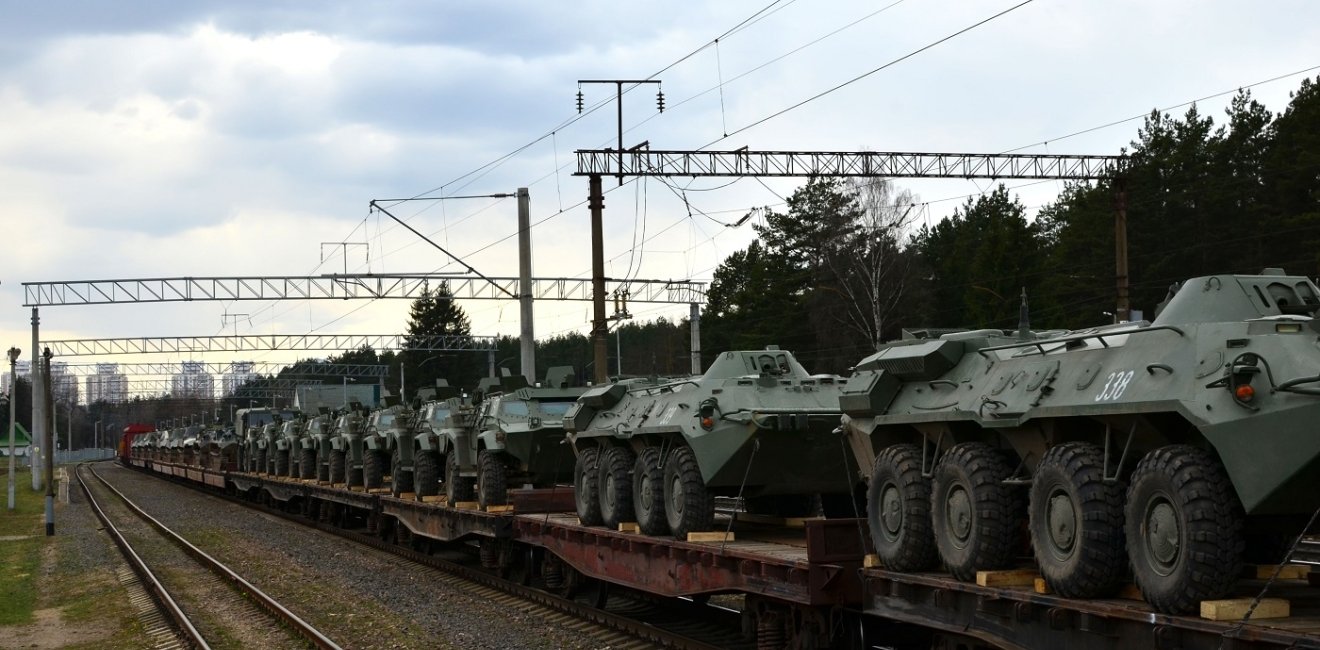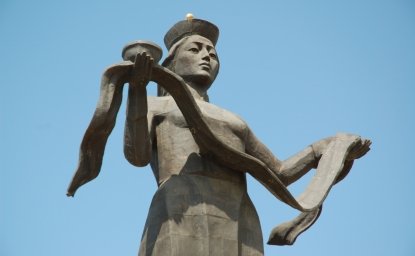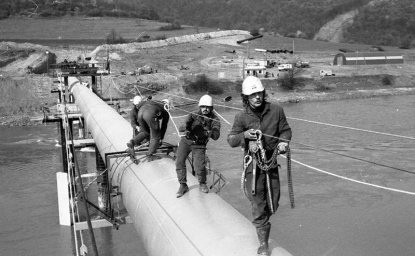Russia’s Unprecedented War Budget Explained
The below is a Kennan Institute Long Read.

A blog of the Kennan Institute
The below is a Kennan Institute Long Read.

Russia’s military expenditure has tripled compared to pre-war times. By 2023, the government intends to spend $160 billion on military needs, or 40 percent of its budget. Combined with regional and private war-related expenditures, this figure may surpass 10 percent of GDP in 2023.
Military Spending Before 2022
In the years 2019–21, the federal budget allocated, annually, 3 to 3.6 trillion rubles to the military ($44.1 to $48.5 billion, based on annual average exchange rates), according to official reports. These numbers represented 14 to 16.5 percent of the federal budget, or 3 to 4 percent of the GDP.
The Kremlin kept its plan to launch a war against Ukraine secret. Therefore, the amount of money allocated for the army in the 2022 budget law—passed in 2021—did not surpass the long established trend. The 2022 budget did not betray war preparations. Things started to change during the war. During the summer and the fall of 2022 Russia’s Ministry of Finance made major adjustments on the fly, so the effective military spending exceeded the plan by 57.4 percent (5.5 trillion rubles instead of 3.5 trillion).
The growth was even higher in dollar terms because of the strengthening of the ruble in 2022 (we observed the opposite in the summer of 2023). In 2022, Russia's military expenditure reached $81.7 billion, a 76 percent increase on the 2019–21 average. The proportion of military expenses in the overall budget increased slightly, to 17.7 percent.
Toward the end of 2022, the government realized that it was in this for the long haul. Military spending, including funding for the military-industrial complex, needed a significant boost. Military factories went on a hiring spree, switching to a two- to three-shift working day.
In 2022, the Ministry of Finance stopped publishing budget statistics with a breakdown of spending by industry to conceal the country’s growing military expenses. Until mid-summer 2023, expenditure structure information was available on the Electronic Budget website. This source is no longer accessible.
2023: Increase in War Spending
The massive spending surge continued in 2023. According to a Reuters analysis, during the first six months of 2023, Russia spent 5.6 trillion rubles on the military, while 5 trillion rubles were projected for the entire year. That represented a 75 percent increase on the first half of 2022.
Post-Soviet Russia has never spent this much on the military before. The war expenditure has reached 37.3 percent of all budget spending, 2.5 times the pre-war average. The government planned to allocate 17.1 percent to the military. The number is impressive in dollar terms too: $73 billion.
Spending on the army was especially high at the beginning of the year, when the government needed to provide advance financing to military plants that have received contracts from the army.
Other budget expenditures remained unchanged. The country spent a total of 15 trillion rubles from January to June (2.5 trillion rubles more than the previous year, which was almost entirely attributable to war spending, the Kremlin’s primary focus). Budget revenues are not keeping up with the needs of the military, so other expenditures are not increasing. Interestingly, the demise of Yevgeny Prigozhin and his private army has allowed the Kremlin to realize some savings on payments to both living and deceased mercenaries.
Reuters obtained a document that enabled an evaluation of secret and unclassified outlays on the military (the former refers to spending on weapons manufacturing and combat missions,while the latter comprises salaries of military personnel). From January to June 2023, the army’s classified expenditure amounted to 3.8 trillion rubles (compared to 2.3 trillion in the previous year), while unclassified spending totalled 1.8 trillion rubles (0.8 trillion in January–June 2022). Notably, unclassified military spending is increasing more rapidly than classified spending, as the government entices individuals to engage in warfare through generous salaries.
If the distribution of spending on the army within a year remains the same as in 2022 (when January–June accounted for 58.2 percent of annual expenditures, due to advances to military plants), the army is projected to receive at least 9.6 trillion rubles in 2023. A government document that Reuters shared with me provides a similar benchmark figure of 9.7 trillion. In dollar terms, spending on the army will rise by approximately 2.6 times compared to the pre-war level: from $46 billion to $115–120 billion.
By the end of 2023, the army’s share of the total budget will not fall below 30 percent. This is twice the pre-war level. Based on the government’s GDP forecast for 2023, an anticipated value of 150 trillion rubles, military spending will be no less than 6.4 percent of GDP. This is three times more than the average amount countries allocate to defense (2.1 percent of GDP).
To sum up, in 2023, Russia’s military and the military-industrial complex will receive almost 10 trillion rubles ($120 billion) from the budget, three times more than before the war. This number excludes spending on security apparatus and other war-related needs, including construction projects in the occupied territories of Ukraine.
War Has Boosted Russia’s GDP
By August 25, as per the operational statistics of the Ministry of Finance, expenditures totaled to 18.9 trillion rubles. The budget deficit for January to July stood at 2.8 trillion rubles (the annual plan is 3.8 trillion). However, after record spending in January and February, the Ministry of Finance cut back during the summer months, and the deficit has not increased significantly since March.
Currently, the budget is financed more evenly, and a new mobilization drive, if announced, would not be a shock for the government. In fact, the budget has set aside funds for both mobilization and increased social spending ahead of Vladimir Putin’s “election” in March 2024. I expect that expenses for the year may reach 32 to 34 trillion rubles. If needed, the Ministry of Finance can increase it to 35 to 36 trillion.
Increased war spending has accelerated Russia’s GDP growth to around 2 percent in 2023. The key factor fuelling growth is weapons and ammunition manufacturing, which can be gleaned, indirectly, from the government statistics. For instance, in July, ship and aircraft output rose by 67 percent year on year, while motor vehicles, except for cars, saw a 46 percent increase. Additionally, computers, optical, and electronic products experienced a growth of 43 percent, and the production of “other finished goods” (which could include ammunition) rose by 23 percent. However, this economic growth does not necessarily translate into increased prosperity.
Ten Percent of GDP on War
War costs are not limited to paying the military and buying weapons. Expenses for treating the injured are classified in the budget as health care expenses, while expenses for debris removal, construction, and restoration of infrastructure in the occupied regions fall under “housing and utilities.” Military expenditures encompass wages for special services, police, teachers, doctors, workers in the occupied territories, and even touring artists.
It is my belief that during times of war, military expenditure should include all expenses that the government marks as classified. And that includes intelligence operations, online misinformation campaigns, space missions, and the funding of pro-Russian politicians worldwide. In times of war, all of these efforts contribute to prolonging the conflict. Russia is waging a multi-front war, so the total expenses related to war can be calculated by combining the overt military expenses with all covert spending. But even this sum will be incomplete. For example, it will exclude spending on patriotic education, which saw a three-fold increase in 2022.
The proportion of classified expenditures in the Russian budget was approximately 10 percent during the 2000s. It was 17 percent in the 2010s, reaching a maximum of 21 to 22 percent during the Donbass hostilities in 2015 and 2016. Classified spending accounted for 19.2 percent of the budget in 2022 and reached 22.3 percent in the 2023 budget plan. Russia categorizes classified expenditures as state secrets, which relate to the security of the state (see this study of classified expenditures, pages 545–558). Under Putin, the proportion of classified expenditures on defense, security and law enforcement, creation of reserves, the economy, education, health care, and even housing and utilities, has been consistently rising.
In 2022, the federal budget's classified spending was worth 6 trillion rubles. Combining this with the open expenditures on the army (2.4 trillion), I calculated that overall military spending in 2022 amounted to 8.4 trillion rubles, or $124.5 billion. The same value can be derived by adding the secret spending of other ministries (2.9 trillion) to total military spending (5.5 trillion). This figure accounts for 27 percent of the federal budget in 2022. It seems to be the most reasonable estimate of Russia's war-related spending. Soon after I published my calculations, the Ministry of Finance ceased publishing the sectoral statistics for budgetary expenses.
In accordance with the budget plan for 2023, secret expenditures are set to increase to 6.5 trillion rubles, while the disclosed portion of the army budget is set to increase to 2.2 trillion rubles. The budget plan assigned 8.7 trillion rubles for military outlays.
As we have seen, however, the actual number for military and industrial spending is expected to approach no less than 9.6 trillion rubles. Since there are no indications that other expenditures will increase, it can be assumed that secret expenditures of other agencies will remain in line with the plan. Therefore, war-related expenses are projected to reach 13.3 trillion rubles, equivalent to approximately $160 billion. This represents 8.9 percent of this year’s projected GDP and roughly 40 percent of the budget expenditures (assuming they reach 33 trillion rubles).
It is not only the federal budget that has war-related expenditures. Regions co-fund contractor payments and participate in reconstructing occupied territories. Private companies also contribute. They finance private military units and purchase tanker fleets to circumvent oil sanctions. The population raises funds for various initiatives to provide for the army. Estimating such spending to be at least 2 trillion rubles, we calculate that this year Russia will spend at least 15.3 trillion roubles on war, equivalent to 10 percent of this year’s estimated GDP.
Expenditure on this scale leads to the expansion of groups that benefit from war (soldiers and their families, the military-industrial complex, military officials) and a reduction in income for everyone else. Extending the war will result in a gradual decline in living standards in Russia.
The opinions expressed in this article are those solely of the author and do not reflect the views of the Kennan Institute.


After more than 50 years as a vital part of the Wilson Center legacy, the Kennan Institute has become an independent think tank. You can find the current website for the Kennan Institute at kennaninstitute.org. Please look for future announcements about partnership activities between the Wilson Center and the Kennan Institute at Wilson Center Press Room. The Kennan Institute is the premier US center for advanced research on Eurasia and the oldest and largest regional program at the Woodrow Wilson International Center for Scholars. The Kennan Institute is committed to improving American understanding of Russia, Ukraine, Central Asia, the South Caucasus, and the surrounding region through research and exchange. Read more




